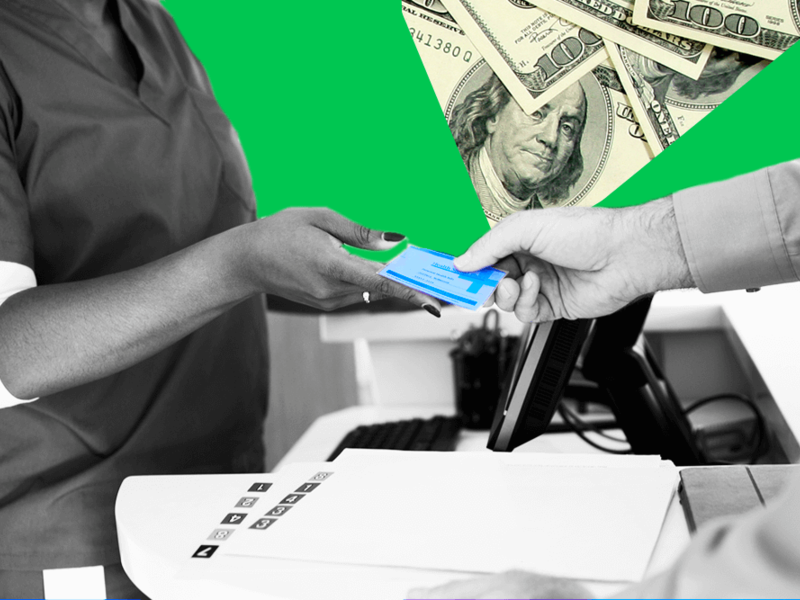
Twenty Medicare Advantage insurers accounted for more than half of the $9.2 billion the federal government paid for care that beneficiaries may not have needed or received in 2016, according to a Wednesday report by federal investigators.
Among these 20 companies, one large insurer stood out for the share of payments it received for diagnoses that were listed on patients’ chart reviews and health risk assessment services, but nowhere else. Both of these techniques “may be particularly vulnerable to misuse by Medicare Advantage companies,” since they are often performed by the health plan or by vendors hired by the health plan, the Health and Human Services Department’s Office of Inspector General report said.
The OIG didn’t name the insurer, but it enrolled 22% of Medicare Advantage enrollees in 2016 and generated 40% of its payments, or $3.7 billion, by listing patient conditions unverified through outside medical claims. That accounted for half of all payments from HRAs, nearly all of which were only reported through in-home vendor visits.
The large company’s enrollment share most closely matches that of UnitedHealth Group during that time, according to The Wall Street Journal. The Minnetonka, Minnesota-based healthcare giant countered that it’s Medicare Advantage program is transparent and compliant with the Center for Medicare and Medicaid Services’ rules, a spokesperson wrote in an email.
“UnitedHealthcare’s in-home clinical care programs provide significant benefits to seniors and for years have been valuable offerings to ensure our members continue to receive cost-effective, appropriate care,” the spokesperson said.
The OIG did not respond to an interview request. The report builds on two previous federal investigations that found insurers inflated patients’ risk scores—or essentially misrepresented how sick their members were—to receive “billions” in reimbursement from CMS in 2017, the year the federal agency pays for member care from the year before.
HHS’ watchdog and the Justice Department have both had their eye on the Medicare Advantage program. The DOJ recently intervened on whistleblower suits related to Independent Health and Kaiser Permanente’s Medicare Advantage programs. The OIG also published audits this year accusing Anthem and Humana of misrepresenting their Medicare Advantage members’ sickness to bilk the government out of billions. Aetna has also said the OIG is auditing its Medicare operations.
Federal investigators’ most recent report did not say if these companies were among the 20 insurers that received payments at least 25% greater than their individual share of enrollees. Combined, these business were responsible for 54% of payments from diagnoses submitted solely on chart reviews or HRA visits, but enrolled just 31% of beneficiaries.
“If you’re a health plan, and you’re going to invest $1, where’s that dollar going to be best invested?” said Harold Miller, CEO of the Center for Healthcare Quality and Payment Reform. “Is it going to be in finding diagnoses to add to people, which can then double my revenue for the patient, or spending more on care improvement that might, but not certainly, reduce total spending on that patient? The shore bet is to go out and find diagnosis codes for people.”
Among these insurers, 12 health conditions accounted for nearly two-thirds, or $3.4 billion, of payment they received but was not linked to patient care. Vascular disease was the most common condition listed, bringing in $610 million during that time; major depressive, bipolar and paranoid disorders followed, which accounted for $533 million in total claims; and diabetes with chronic complications was the third most common diagnosis, which made up $390 million.
Investigators recommended CMS should provide oversight and periodically monitor the 20 companies—particularly with the one insurer, allegedly UnitedHealthcare, which substantially drove risk-adjusted payments from chart reviews and HRAs. CMS said it planned to take OIG’s recommendations under consideration.
The federal agency could also resolve some of these issues by eliminating HRAs as a method for assessing a members’ health, since many have no connection to healthcare providers where patients receive care and are hired and paid by health plans to find additional diagnoses, said Dan O’Neill, a healthcare consultant and chief commercial officer of Pine Park Health, which provides clinical staff to senior services communities. He named UnitedHealth Group’s Optum and Change Healthcare, which the company aims to acquire, and the Justice Department is currently reviewing over antitrust concerns, as examples of major HRA players. CMS also could avoid overpaying Medicare Advantage plans by only reimbursing insurers for services linked to medical care, he said.
“You’ll get some providers who sort of roll their eyes and say, ‘Yeah, the insurers are all bad guys,'” O’Neill said. “But realistically, when there’s more money coming from taxpayers into the healthcare system, some of that ends up in the pockets of provider organizations.”
Source link : https://www.modernhealthcare.com/insurance/some-medicare-advantage-insurers-blame-half-undiagnosed-claims











